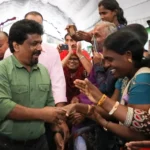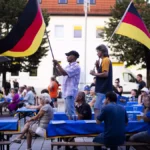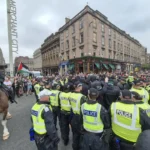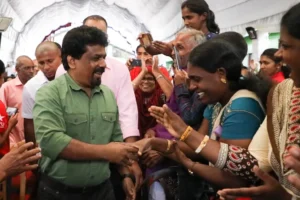Country reeling as police unleash deadly violence on Pedro Castillo’s supporters, ramping up anger and inciting more protests and blockades
isbeth Candia wept uncontrollably as she waited in Cusco’s central morgue to recover the body of her brother Remo, the latest protester to be killed by Peruvian security forces as the country experiences its worst political violence in decades.
“Let there be no more deaths, let his be the last,” she said between sobs. “We don’t want his death to have been in vain,” she told the Guardian by phone.
She sat in the waiting room as coroners carried out a postmortem examination on her brother’s body on Thursday morning. Remo Candia, 50, had been rushed to the city’s Antonio Lorena hospital the night before with a gunshot wound to the abdomen but medics could not save him.
“He was just exercising his right to protest and they shot him at point-blank range,” said Lisbeth.
A lunch on Sunday was the last time she saw the cheerful, popular leader of Urinsaya Collana, the Quechua-speaking campesino community in Anta province where the family lives.
A father of three children – the youngest aged just five – Remo had led farmers from his village to join the protests in Cusco’s regional capital, demanding the resignation of President Dina Boluarte over the 41 civilians who have died in violent clashes with the security forces in little more than a month.
The spiralling violence began when former leader Pedro Castillo was forced out of office and detained on rebellion charges in early December after attempting to dissolve congress and rule by decree in the hope of avoiding a third impeachment trial.
Boluarte, his vice-president, succeeded him but became quickly unpopular as police unleashed deadly violence on Castillo’s supporters, in turn ramping up anger and inciting more protests and blockades.
There was visceral grief and anger in Juliaca, near Peru’s border with Bolivia, as it reeled from the most lethal bout of violence in more than a month of anti-government protests. Under curfew, the city was subdued on Wednesday as mourners, in their thousands, followed the caskets of at least 17 protesters and bystanders who had been killed – without exception – by gunshot wounds.
The dead included a 31-year-old medical student who was helping an injured protester and a 17-year-old girl who volunteered at an animal shelter.
The remains of a police officer were also found in a burned-out patrol car. His companion, who suffered head injuries, says they were attacked by a mob.
Candia was mortally wounded as protesters tried to storm the airport in Cusco, the gateway to Machu Picchu, the country’s pre-eminent tourist attraction. The protesters were demanding Boluarte’s resignation but, analysts say, the anger runs deeper and is rooted in a decades-old schism between the political elite in Lima and the marginalised Indigenous and peasant communities in the Andes and the Amazon.
In Castillo, a former schoolteacher with no previous political experience, many rural Peruvians thought they found a leader who represented them. Despite allegations of corruption, and accusations that he had surrounded himself with cronies and had little grasp of how to govern, many sided with him as he faced down the deeply unpopular opposition-led congress and hostile media.
In poor, largely Indigenous Puno, where close to 90% of the population voted for Castillo in 2021 on his promise to lift up the poor, Governor Richard Hancco said dialogue with Boluarte’s government was out of the question.
“For us, this is a murderous government. There is no value given to life,” Hancco said. “It is completely unacceptable that a government causes more than 40 deaths and there has not been a single resignation.”
Even by the security forces’ standards, Monday’s violence represented a brutal escalation, said Javier Torres, editor of regional news outlet Noticias Ser. “Our security forces are accustomed to shooting people but I think that here they have crossed a line that has not been crossed before.
“It was a massacre – I can’t find any other term to describe it,” he added.
Omar Coronel, a sociology professor and Peru’s Pontifical Catholic University, said Boluarte’s government has formed a tacit coalition with powerful far-right lawmakers who have portrayed the protesters as “terrorists”, a throwback to Peru’s internal conflict with the Shining Path in the 1980s and 90s. Known as terruqueo in Peru, it is a common practice used to dehumanise protesters with legitimate grievances.
“The police force in Peru is used to treating protesters as terrorists,” said Coronel. “The logic is people who protest are enemies of the state.”
Given the utter distrust in political institutions and rising clamour for Boluarte to step down, the plan to bring forward elections by two years to 2024 is too far off, said Torres. “If it continues like this, it will be protest, followed by massacre, and that is just not viable,” he said.
The UN human rights office has demanded an investigation into the deaths and injuries while Peru’s attorney general’s office has opened an investigation for genocide and homicide into the Boluarte and her leading ministers.
At the morgue in Cusco, Lisbeth Candia veered between sorrow and rage. “Why must so many lives be spent just because that woman does not want to leave the government?” she asked.
“She must go. We don’t want her. We want her to pay for the death of my brother, for the deaths of so many,” she said furiously. “We want to live in a new homeland, where we’re not considered second-class citizens.”
















